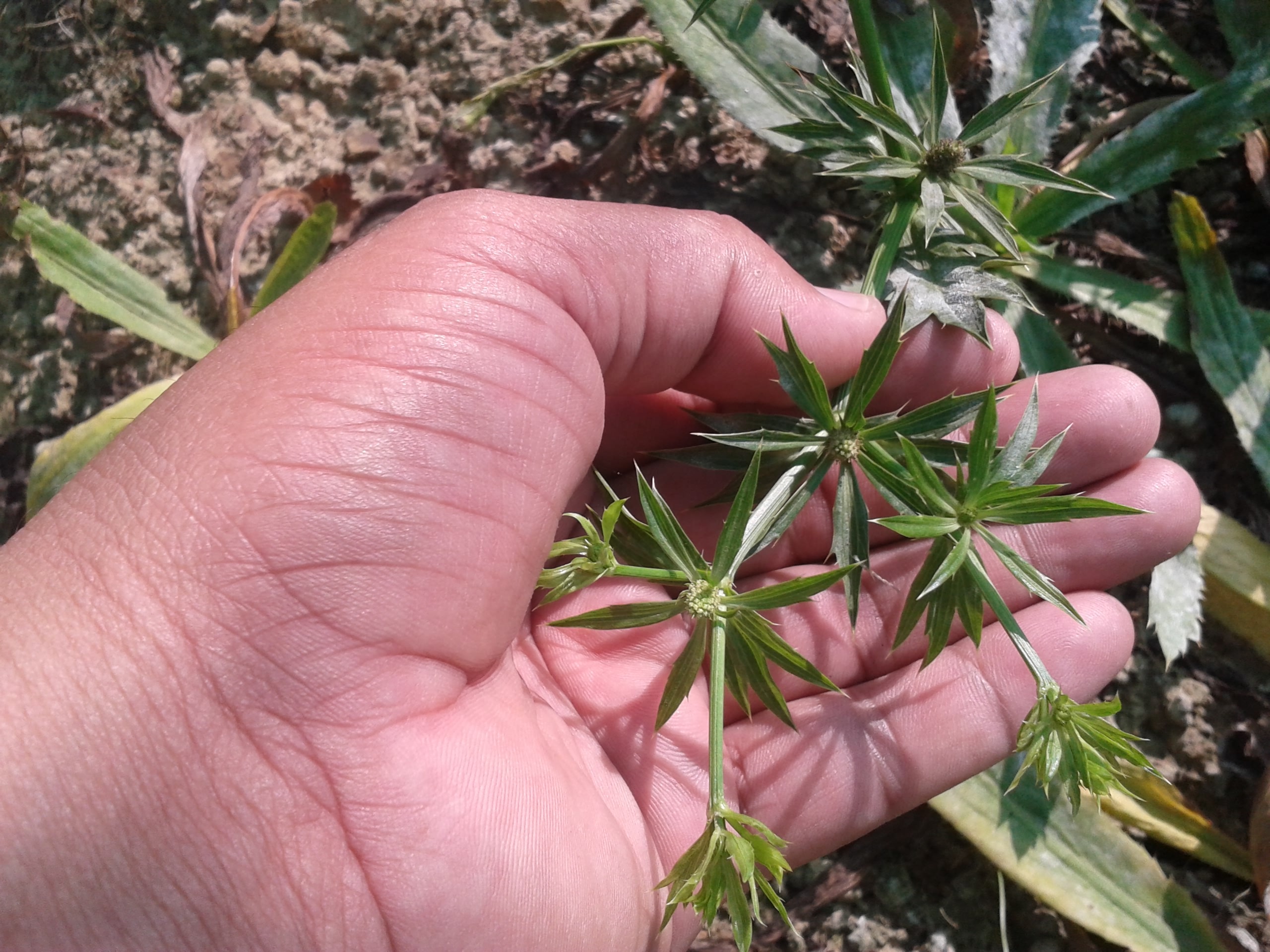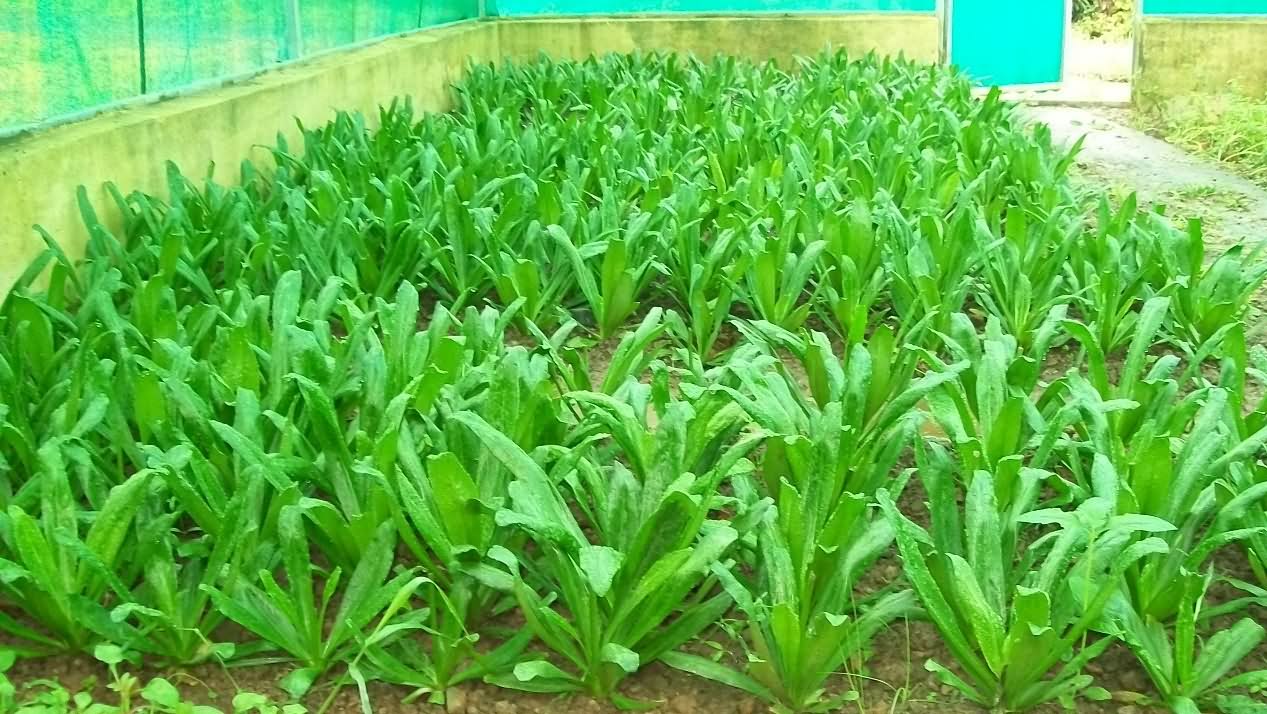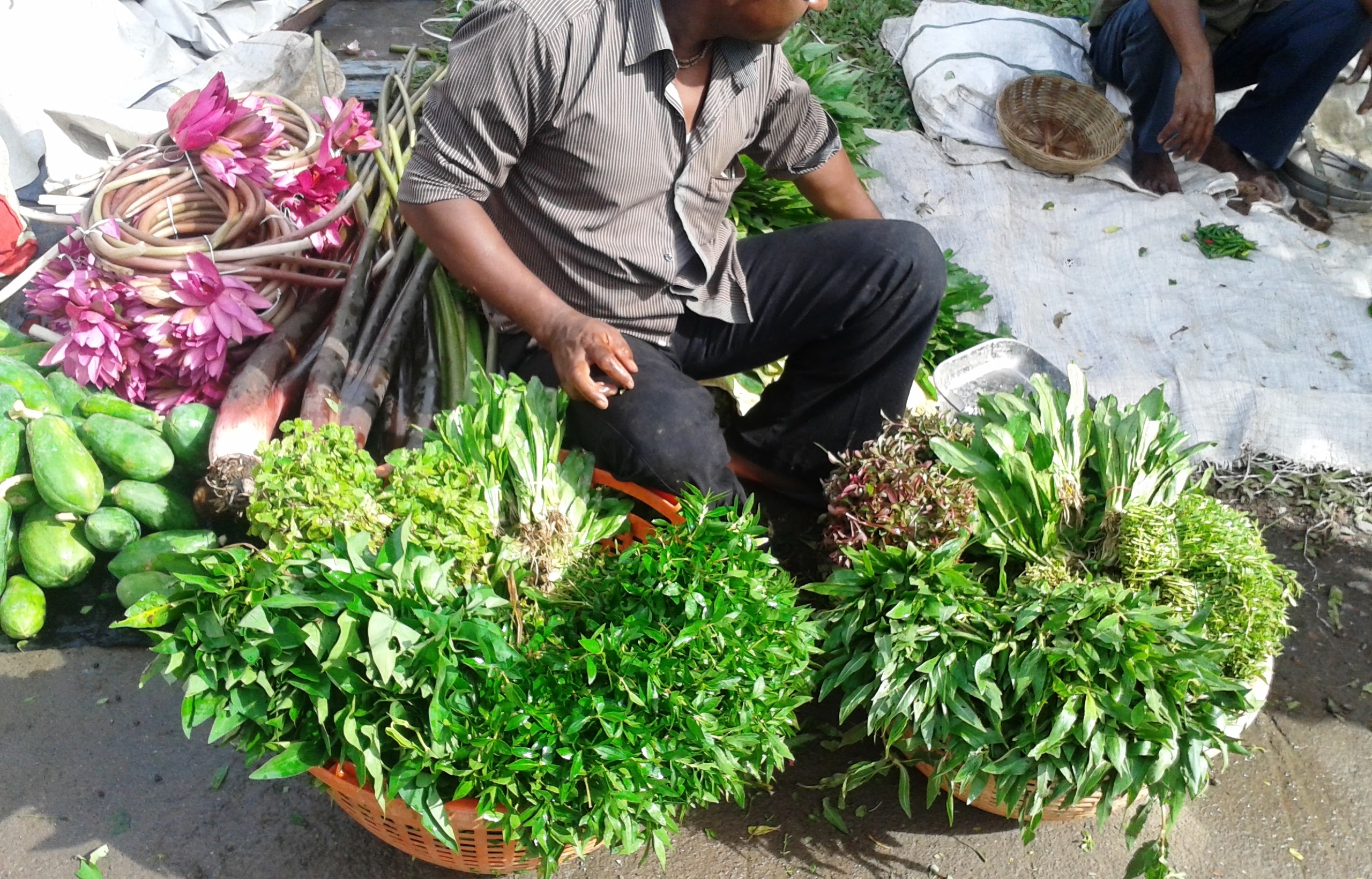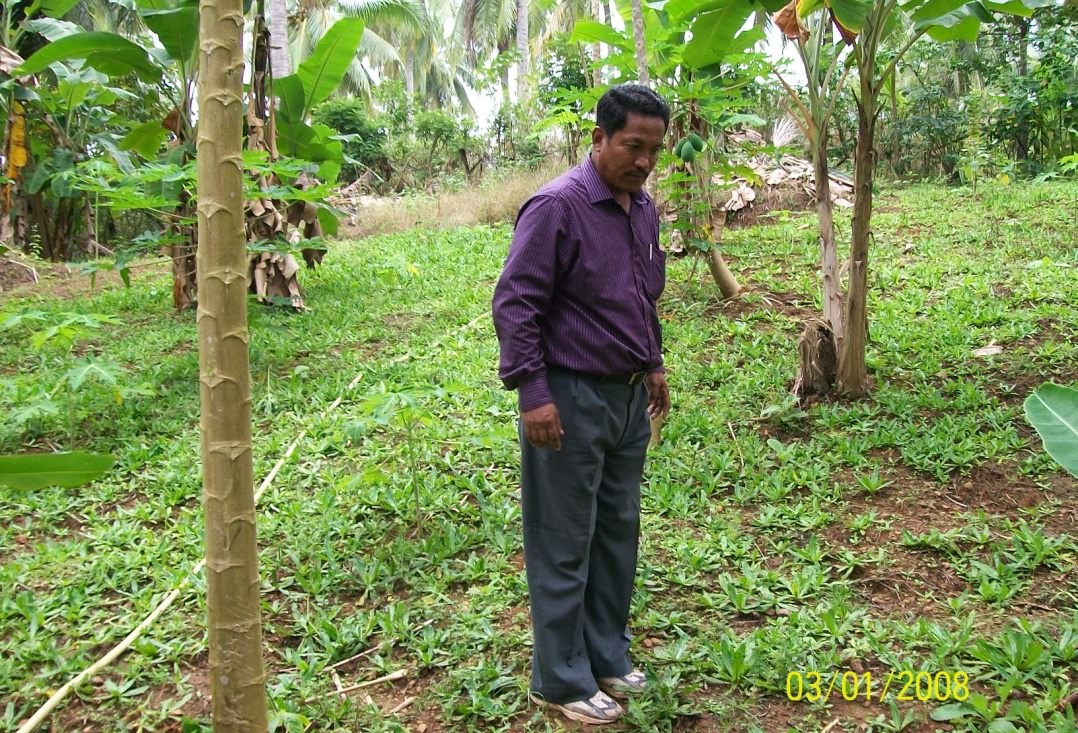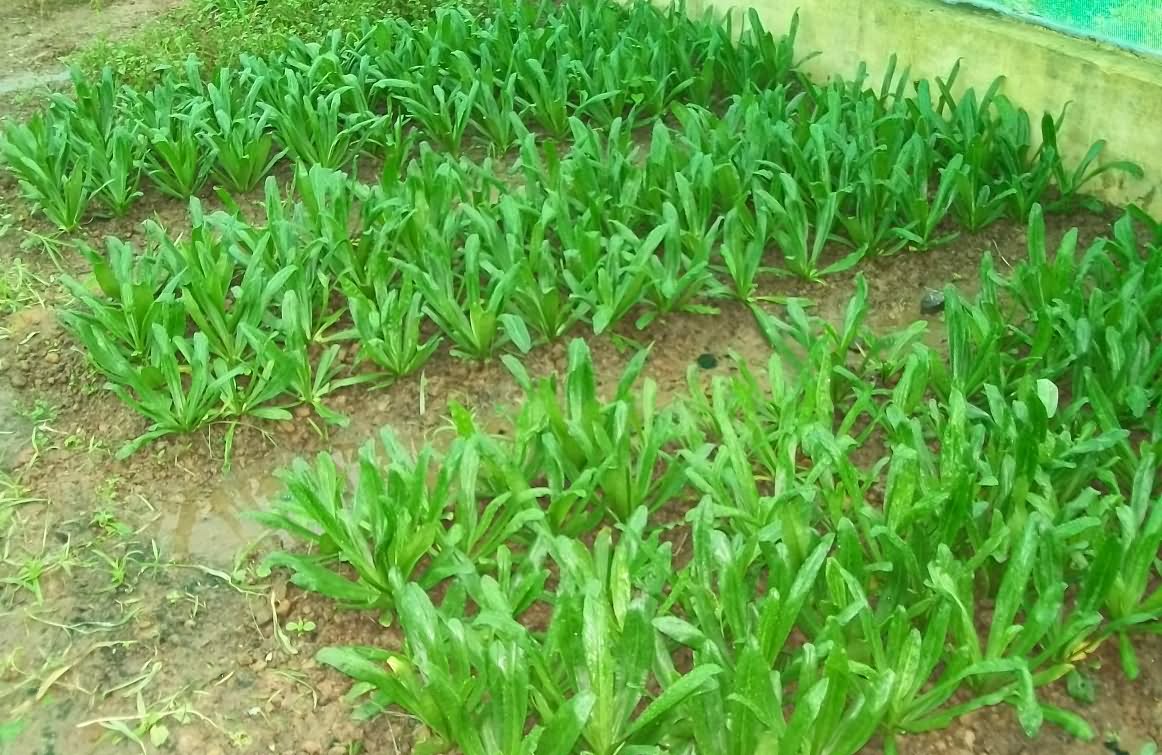चौडा धनिया: उष्णकटिबंधीय द्वीपों की एक सफल फसल
Broad dhaniya (Eryngium foetidum L. / Umbelliferae-Apiaceae) is a shade loving aromatic and medicinal plant also grown as a leafy vegetable in tropical regions.
Broad dhaniya plant Broad dhaniya in flowering
It is native to Central and Latin America. It is also known as Mexican coriander, cilantro, spiny coriander, fit weed, burma dhaniya, Vilayati dhaniya.
CARI, Port Blair has developed its first variety through mass selection using local collections from Andaman & Nicobar Islands and named as ‘CARI Broad Dhaniya’. It has broad, long, serrated leaves with uniform growth and flowering pattern.
It is rich in carotenoids, pohyphenols, chlorophyll and ascorbic acid and dietary nutrients like calcium, iron, sodium, copper and potassium. It’s cultivated in shade condition can be a profitable business in humid tropical and warmer regions even where heavy rains are common.
Although, it common in Andaman and Nicobar Islands, Eastern and North-eastern parts of Indian at present, but its potential need to be explored in other parts of mainland India.
It has unique taste, better post harvest life, demand among the traditional consumers settled in different parts of country, fit very well as intercrop in fruit orchards and grow very well in rainy season in shadenet.
Broad dhaniya in shadenet house (50%) Broad dhaniya in weekly market
Broad Dhaniya Plant description
The plant is a tap-rooted biennial herb with long, evenly branched tap roots. The leaves are oblanceolate, 15-25 cm long, serrated, acute, dentate, small spines, shiny green with prominent midrib, spirally arranged around the short thick stem.
The flowering starts after 110 to 120 days of transplanting and seeds mature after 150-165 days. Inflorescence is umbel and flowers are creamy white.
Broad Dhaniya plant Food value
Broad dhaniya is widely used as leafy vegetable, condiment, seasoning and preserving food items. It is sometimes used as a substitute for coriander, but it has a much stronger taste. Its oven dried leaves retain good green color and flavour, making it valuable in the dried herb industry.
It is used mainly as a seasoning in the preparation of a range of food items, including vegetable and meat dishes, chutneys, preserves, sauces, and snacks. Some of the products like biofortified biscuits, kurkure, pakora, badda etc. can be prepared by use of dried powder of Broad dhaniya.
Some of the daily uses products where broad dhaniya is a ingredient are: chutney (1 part of broad dhaniya leaves +1 part Pudina leaves+ 1 part immature mango pulp; 1 part of broad dhaniya leaves +1 part Pudina leaves+ 1 part coconut meat), seasoning culinary item (2-5 fully grown leaves in vegetable or meat), seasoning of salad items (1-2 leaf fine pieces on salad).
Medicinal value of Broad Dhaniya
It has many traditional medicinal uses such as to treat fevers and cold, vomiting and diarrhea. Leaf decoction or mixture with coconut oil is used to cure cold, pneumonia, flu, diabetes, constipation and malaria fever.
Ethnomedicinal uses include treatment for burns, earache, fevers, hypertension, constipation, fits, asthma, stomach ache, worms, infertility complications, snake bites, diarrhea and malaria.
It has been acclaimed as health foods due to its high content of micronutrients, vitamins, phytochemicals and other health benefiting compounds.
Perfumery and aromatherapy value
The essential oil of broad dhaniya, consisting of about 40 compounds, has high economic value in international and domestic markets. It is extensively used in perfumery and cosmetic industry. It has potential use in aromatherapy. It has good scope to in processing and herbal industry.
Nutritive value of CARI Broad Dhaniya
CARI-Broad Dhaniya is a variety of Broad dhaniya developed by Central Agricultural Research Institute, Port Blair and in principle released by State Sub Seed Committee on Agri-Horticulture Crops, Andaman & Nicobar Islands (also called as State Variety Release Committee) in 2011 for island conditions.
This is the first variety of Broad Dhaniya in islands and country as well which ensure uniform growth, high yield and better quality of crop to fetch higher market price. The richness of green leaves in micronutrients and phytochemicals show its potential for making value added products. Fresh leaves of Braod dhaniya contain around 86.57 percent moisture.
About 100g dry leaf powder of Broad dhaniya contains 5.25 g crude protein, 9.72 g crude fibre, 0.95 g crude fat, 58.4 mg potassium, 43.0 mg phosphorus, 441.4 mg copper, 350 mg calcium, 121.6 mg sodium, 105.8 mg iron, 88.4 mg magnesium, 10.5 mg manganese, 3.7 mg zinc and 1.5 mg cobalt. The fresh 100 g leaves contain 149.1 mg Vitamin C, 380.2 mg polyphenols, 83.4 mg anthocyanin, 28.3 mg carotenoids, 42.7 of tannins and 454.9 mg chlorophyll.
The leaves also contain antinutritional factors like nitrate (77.5mg/100g), phytate (35.9mg/100g), oxalate (4.3mg/100g) and saponin (215mg/100g). However, boiling process reduced their concentration to the safe levels.
Cultivation practices for Broad Dhaniya
Climate and soil
The ideal conditions for Broad dhaniya cultivation are tropical climate with moist and shade (35-50% shade), mean temperature of 25-35°C, high humidity (65-85%) with assured irrigation facility during dry period. Its cultivation can be explored in sub-tropical climatic conditions like in North India during kharif/ rainy season for leaves.
In shaded conditions, plants produce larger and greener leaves with better appearance and higher aroma. It tends to bolt and flower profusely under long day conditions. But, shade condition delays flowering and increases harvest period of leaves.
Inte rspaces in coconut and arecanut plantations in tropical regions are well suited for its cultivation. It can be grown well under wide range of soils but prefers well drained sandy loams and or heavy soils rich in organic matter. It also performs well in slightly acidic soils with pH range from 5.0-6.0.
Broad dhaniya in mixed fruit orchard Broad dhaniya on raised bed
Nursery preparation and transplanting
The seeds should be sown in fine soil or coconut husk + vermicompost (1:1) media filled in plastic trays or nursery blocks (3 x 1m). Raised beds with finely powdered soil should be prepared. Seeds should be sown in 1-1.5 cm deep lines at 5cm distance.
Initially beds should be covered with shading materials to provide favourable microclimate. Proper moisture should be maintained in the beds to ensure high germination percentage. The seeds are very minute and take around 20-30 days to germinate.
After 45-50 days of sowing the seedlings should be transplanted in a well cultivated field at 25 x 20 cm distance. It can spread naturally through seeds with water.
Management practices
Manures and fertilizers:
The organic sources should be provided during April-May and December-January months to produce quality leaves round the year.The crop is growing well with application of 6-8 tonnes of vermicompost, 50 kg potassium and 50 kg phosphorus in one hectare.
Irrigation:
In islands, Broad dhaniya is grown as a rainfed crops. For establishment of seedlings, transplanting should be followed by irrigation to keep the field moist for 8-10 days. Frequent irrigations at 3-4 days interval may be given during dry spells. Proper drainage during heavy rains are necessary for producing quality leaves.
After care:
Intercultural operations should be done at 15 days interval for speedy growth and higher yield of Broad dhaniya. Weeds compete more vigorously with Broad dhaniya for light, nutrients and water. Hand or mechanical weedings should be done at 10 days.
However use of weedicides should be avoided. Early bolting in Broad dhaniya is a problem in long day conditions as it reduces leaf yield. The researchers found that application of GA3 @ 100 ppm after one month of transplanting can delay bolting and keep the crop in vegetative stage for longer period.
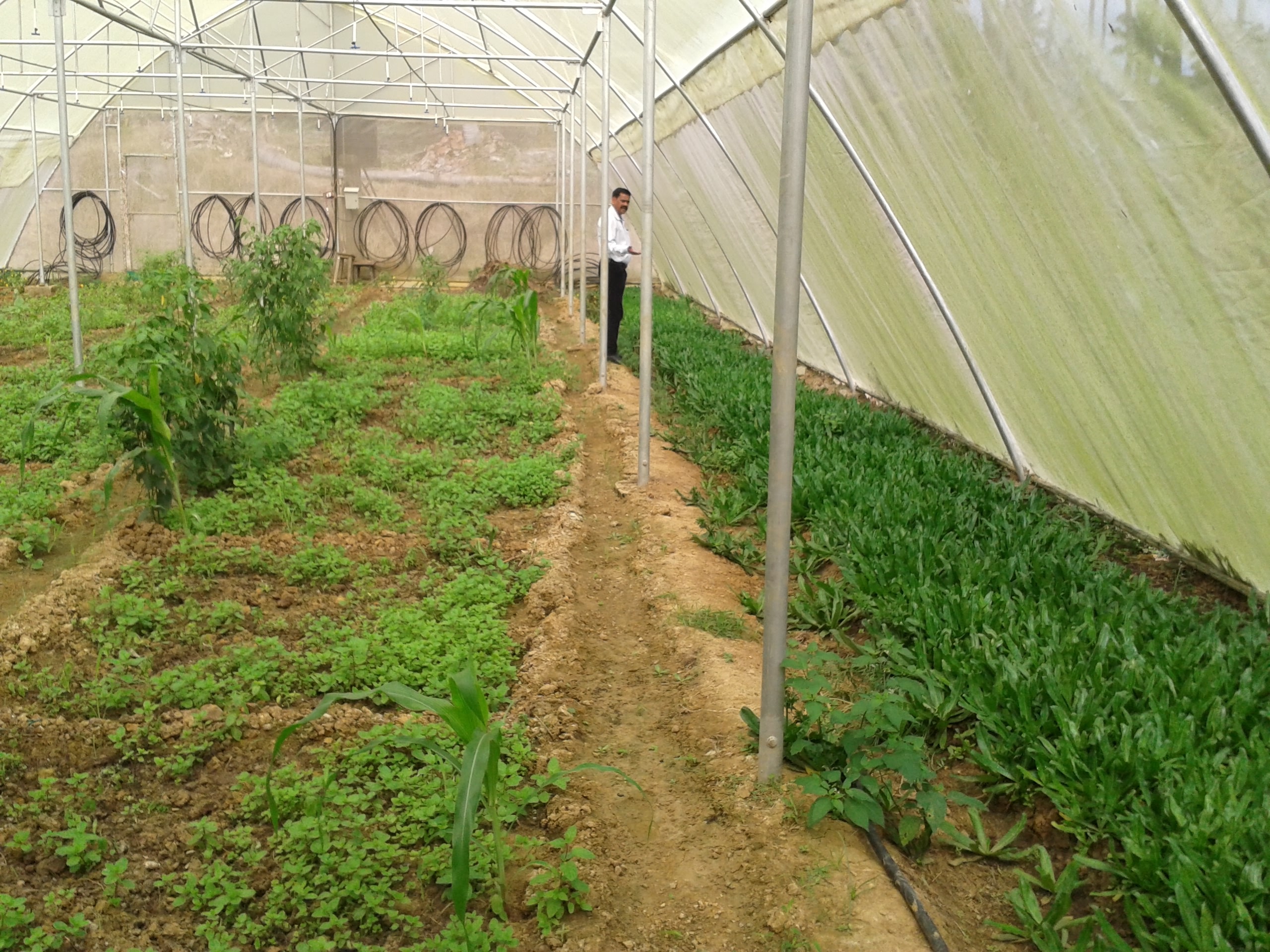
 In borders of polyhouse Ready to harvest crop
In borders of polyhouse Ready to harvest crop
Disease and pest:
Broad dhaniya is observed to be relatively free from major pest and diseases. However, some studies showed small incidence of root knot nematodes and bacterial black rot. In Islands, no major diseases and pests were reported from Broad dhaniya. But curling of old leaves and some damage of grasshoppers appears during rainy season which can be minimised by neem based product.
Root problem in broad dhaniya Broad dhaniya in flowering stage
Harvesting and post harvest management
The crop is ready for harvesting after 80-90 days of transplanting. Presently, whole plants are uprooted and sold in the market which is destructive method because it does not permit multi-harvest for higher economic returns. However, the individual leaves should be clipped in early morning.
So, growers need to change their existing harvesting practice for more income. In early morning hours, the fully grown leaves should be picked from plants. The harvested leaves should be kept in shade for 1 hour and sprinkled with good quality water.
The leaves bundles of different weight like 50g, 100g, 200 g, 500g, 750g and 1kg should be made and marketed. On average 8-10 tones green leaves can be harvested from one hectare land. The three harvests are done in a year. However, the harvest frequency can be increased with proper nutrition particularly nitrogen rich organic sources.
Processing and fortification
The leaves may be dried and powdered for selling in packets or preparing different value added products like biscuits, kurkure, pakora, muruku, etc. Microwave dried leaves gives better coloured powder with good appearance than sun dried leaves.
Dried powder can be used as ingredient for fortification and seasoning of food items.
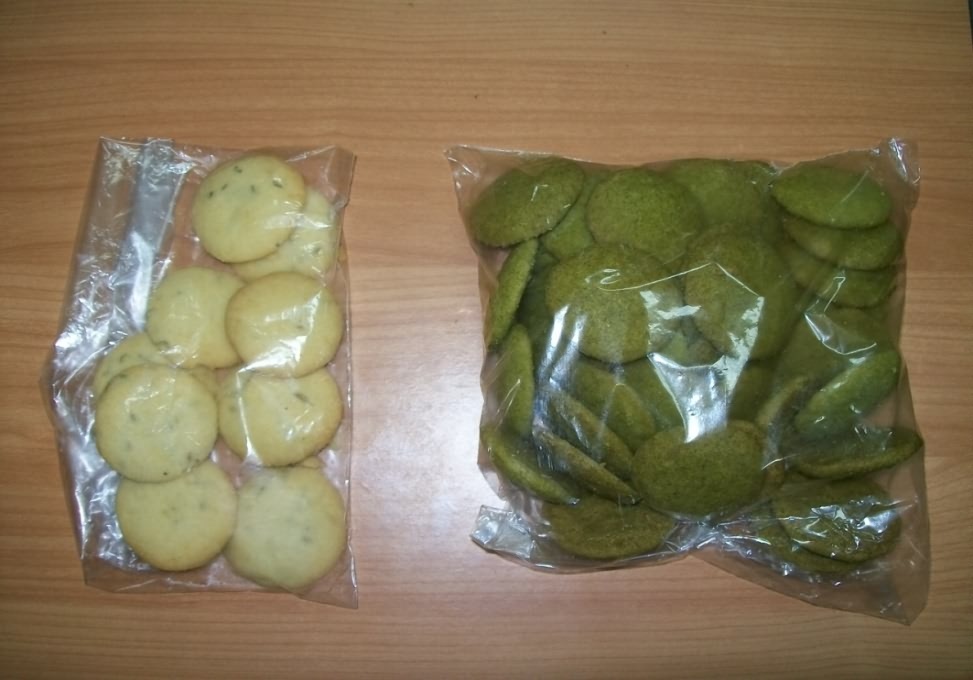
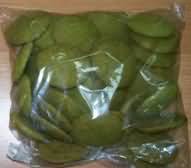
Conclusion
Broad dhaniya is used throughout the tropical world as leafy vegetables, medicine, seasoning item, source of perfumery oils and nutrients. But, still is counted as an underutilized vegetable and predominantly consumed by native people.
It is rapidly becoming an important item in world market due to its food and medicinal values and also for prolonged shelf life. The newly developed variety CARI Broad Dhaniya can be grown for higher yield and income. The success of Smt.
Selin Rani (a Best Farmer Awardee of ICAR- CIARI, Port Blair) for growing Broad dhaniya on large scale in her coconut and banana garden can be taken as an example for women empowerment through cultivation of such underutilized vegetable particularly in geographically and climatically challenged regions.
Authors:
Shrawan Singh1 and L. B Singh
ICAR-Central Island Agricultural Research Institute, Port Blair-744101,
Andaman & Nicobar Islands
1Present address: ICAR-Indian Agricultural Research Institute, New Delhi-110012
Email:


